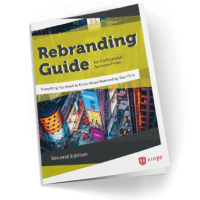A brand is a complex organism. This is part four in a series of articles in which we examine a successful brand’s component parts.
Any time you buy a product or a service, you probably have a mental picture of what your purchase will do and how it will improve your business or life. Often, these expectations are based on presumptions, which can lead to real disappointment when you put an unfamiliar product or service into action. Sometimes these expectations are built on the recommendations of others. And sometimes, these expectations are communicated by the brand itself.
Of these three scenarios, only the last one gives the seller any control over a buyer’s experience. Called the brand promise, it’s one of the most powerful aspects of branding.
What is a Brand Promise?
A brand promise is an extension of a company’s positioning. If you think of positioning as the fertile ground that allows a brand to germinate, grow and thrive, the brand promise is a brand’s fruit—it’s the tangible benefit that makes a product or service desirable.
A brand promise can be spelled out to the public, or it can be manifested more subtly in the expression and delivery of the brand experience. A few years ago, FedEx declared that it was the only choice “when it absolutely, positively has to get there overnight”—an overt promise that still resonates today.
In the belly of the world’s food capital, at 140 Avenue des Champs Elysée in Paris, France, is a world-renowned eatery that regularly attracts a crowd. Now, I’m not referring to La Tour D’Argent or Maxim’s. I’m talking about McDonalds, and over the past 35 years it’s taken the world by storm. How does an unpretentious American import thrive in a culinary paradise? To Americans and Europeans alike, McDonalds delivers on its brand promise: an inexpensive, familiar, and consistent meal delivered quickly in a clean environment. Whatever country you’re in, the fries are always crisp, the coffee comes in a convenient take-out cup, and the bathrooms are clean. When people want to take the guesswork out of dining out, McDonalds is there to serve them.
A promise, of course, is good only if it’s kept. If a company doesn’t deliver on its promise the vast majority of the time, its reputation—and sales—will likely decline. So why would a business risk everything on a brand promise? After all, wouldn’t it be safer to make no promises at all to clients?
In fact, the opportunity cost of hiding in the shadows is enormous. If a business is confident in its abilities and has developed a compelling and consistent customer experience, it can more easily differentiate itself and assume a market leadership position. Clients will choose these businesses more often because they appear to offer more value.
Brands can be notoriously difficult to control. A brand promise, however, gives a company substantial leverage over the brand experience. It allows a business to set up client expectations and generate excitement.
So tonight, close your eyes and make a promise. Then tomorrow (and ever after) make it come true.
3 Ways to Make (and Keep) Your Promise
What promises are you making to your clients? To motivate clients, a brand promise must achieve the following three goals:
- It must convey a compelling benefit
- It must be authentic & credible
- It must be kept, every time
Promises Kept
A promise can define a company in the marketplace. Below are a few examples of companies that create expectations and consistently deliver on them. Can you think of others?
FedEx — Your package will get there overnight. Guaranteed.
Apple — Own the coolest, easiest-to-use cutting-edge phones, computers and other consumer electronics
McKinsey & Company — Hire the best minds in management consulting
Lynda.com — High quality training that’s affordable and convenient
IDEO — Industrial design for companies that want to innovate
Read Earlier Posts in This Series:
- Elements of a Successful Brand 1: Brand Positioning
- Elements of a Successful Brand 2: The Tagline
- Elements of a Successful Brand 3: Personality
- Elements of a Successful Brand 4: Brand Promise
- Elements of a Successful Brand 5: The Name
- Elements of a Successful Brand 6: The Logo
- Elements of a Successful Brand 7: Color
- Elements of a Successful Brand 8: Messaging
- Elements of a Successful Brand 9: Imagery
How Hinge Can Help
Develop rebranding strategies that better connect with existing clients and prospects. Hinge’s Branding Program can help your firm stand out from the competition and build a brand that drives sustained growth.
Additional Resources
- Our Rebranding Kit gives you the tools and knowledge you need to lead your firm through a rebranding.
- Get strategies, tips, and tools for developing your firm’s brand with Hinge’s Brand Building Guide for Professional Services Firms.
- Download the free executive summary of our latest study Inside the Buyer’s Brain, Fourth Edition to learn how to build a powerful brand to help your firm close more sales.


